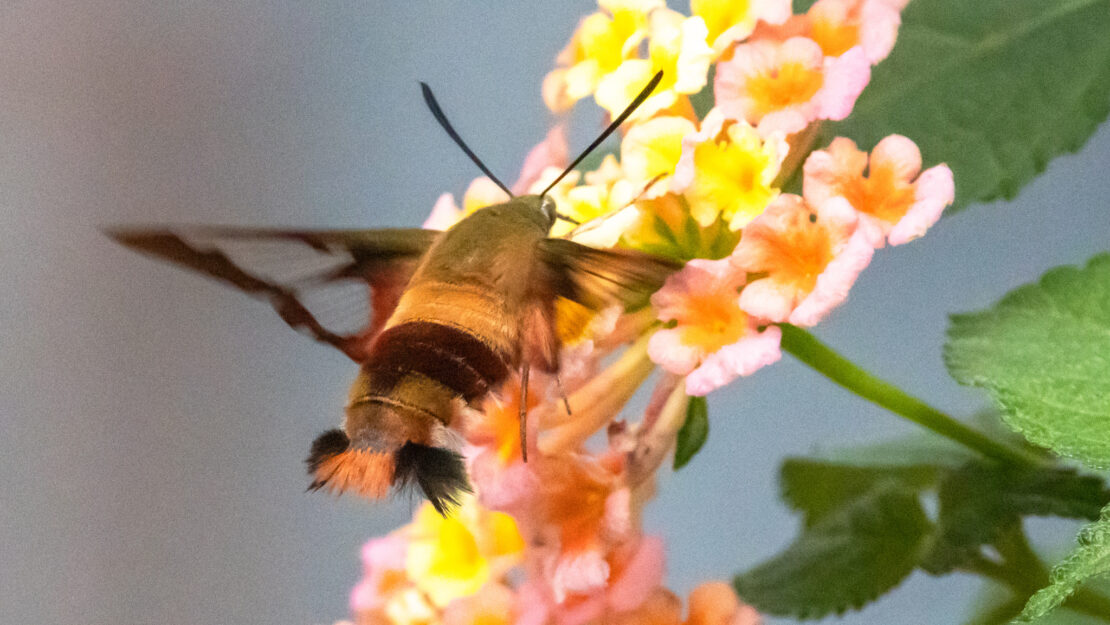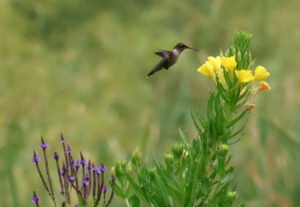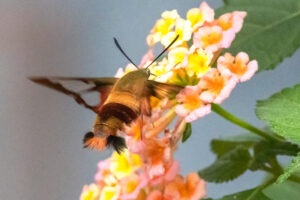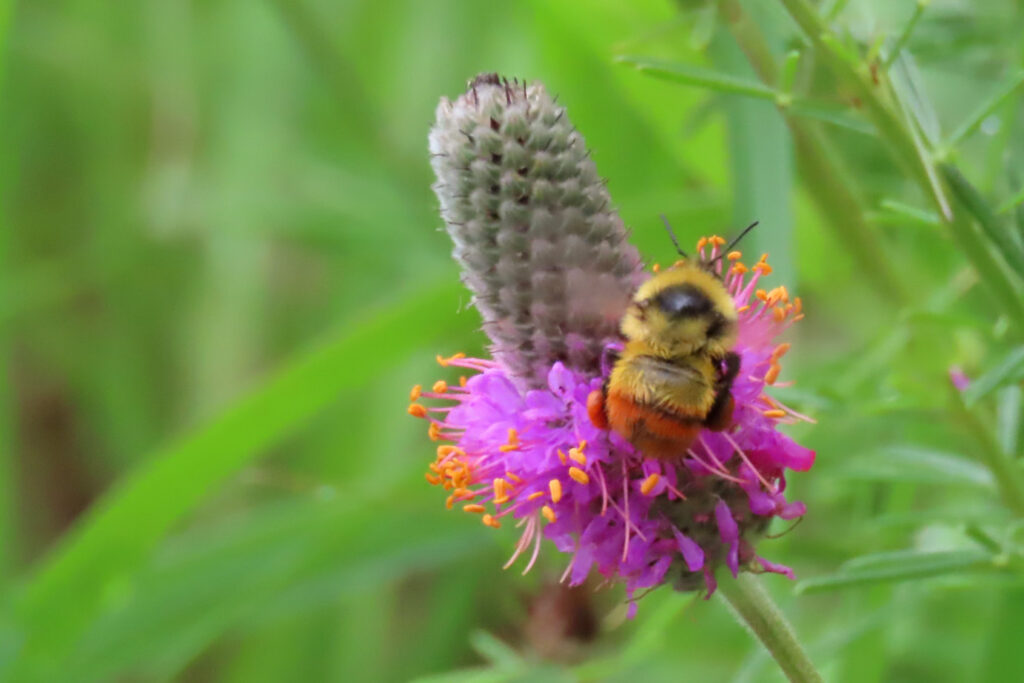Pivotal Pollinators

By Kyle Dahlquist, Clean Water Corpsmember / AmeriCorps Member placed at Pennington SWCD

The summer growing season is a time of abundance and proliferation, perhaps best exemplified by the flowers that speckle the fields and forests of Minnesota. If you’ve ever taken the time to walk through a field of wildflowers, a closer look will reveal a host of animals that make flowering reproduction possible: the pollinators. These (mostly) flying creatures—bugs, birds, and bats—serve a critical role in conservation and agricultural production. And they need our help.
Over the past half-century, pollinator numbers have been decreasing at an alarming rate. The Cornell Lab of Ornithology estimates a loss of 2.9 billion birds since 1970, with the majority of those coming from the sparrow, warbler, finch, and blackbird families. Habitat loss, climate change, and pollution have contributed to this precipitous decline.

The bugs aren’t faring any better. Insects are far and away the most numerous, diverse, and successful group of animals on the planet. There are more unique species of cockroaches than there are mammals, more species of flies than vertebrates, and more species of beetles than plants. These little guys form the base of every terrestrial food web on the planet, and their absence causes cascading effects on these interconnected systems. While often the first that comes to mind, bees are far from the only crucial pollinating insect. Beetles, butterflies, moths, wasps, flies, and even mosquitos are often overlooked in their efforts. Insects pollinate roughly 75% of global crops, a valuation of 600 billion dollars annually. Unfortunately, insect populations are suffering an even greater decline relative to most other groups of animals. It is difficult to estimate exact numbers, as there are still so many unknown insect species, but a recent meta-analysis by UC Riverside claims a 45% population decline in just 40 years. The usual suspects are to blame: habitat loss, climate change, invasive species, and insecticides.
As dire as the situation may seem, it’s not all doom and gloom! As pressure on the pollinators has risen, so too have conservation efforts. Habitat restoration, insecticide regulation, and climate initiatives are all ramping up in response to the increasing strain on our natural world.
On the individual level, the most impactful action one can take is to cultivate native flowers. In general, try to limit extensive patches of monoculture (like grass, for example), and maintain a diverse selection of wildflowers. Look for local seed mixes that promote healthy biodiversity. Minnesota’s Lawns to Legumes program is an excellent place to start if you’re interested in converting some of your lawn or yard into pollinator habitat. The old adage applies: “If you build it, they will come!” There is still time to save the pollinators, but it will take a concerted effort from all of us to make it happen.

Sources:
npr.org/transcripts/1082752634
entomology.ucr.edu/news/2023/07/13/researchers-study-global-decline-insect-populations
birds.cornell.edu/home/bring-birds-back/